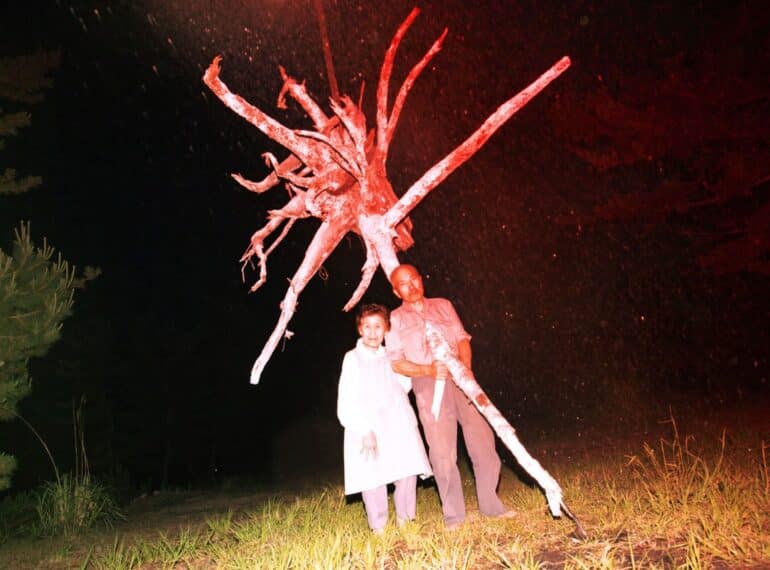
An award-winning exhibition curated by an Old Elizabethan academic about the earthquake, tsunami and nuclear disaster that hit Japan in 2011 has returned to the UK.
 The exhibition, Picturing the Invisible, is now on at the Heong Gallery – a contemporary art space in Downing College, University of Cambridge, that has recently hosted exhibitions featuring artists including Ai Wei Wei, Barbara Hepworth, and David Hockney.
The exhibition, Picturing the Invisible, is now on at the Heong Gallery – a contemporary art space in Downing College, University of Cambridge, that has recently hosted exhibitions featuring artists including Ai Wei Wei, Barbara Hepworth, and David Hockney.
Featuring striking photography as well as a series of essays by internationally renowned experts in fields ranging from science to diplomacy, the exhibition is curated by Dr Makoto Takahashi (OE 2003–2010), a Fulbright-Lloyd’s Fellow from the Program on Science, Technology & Society at Harvard University’s Harvard Kennedy School. and a lecturer at the Technical University Munich’s Department for Science and Technology Studies.
Bringing together Makoto’s research interests in the Fukushima disaster with his longstanding involvement with art, the exhibition was shown at the Royal Geographical Society in London in 2021 and subsequently in Munich, where it won the European Association for the Study of Science and Technology’s 2022 Ziman Award.
It returns to the UK in an expanded format and is being shown until 23rd April during Wednesday–Sunday afternoons at the Heong Gallery. Admission is free.
“We are proud to be the first research-led exhibition at this venue and I would be truly delighted to welcome the QE community to this exhibition space,” said Makoto, who curated it in collaboration with his students in Munich.
Organised in memory of ‘3.11’ (the 9.1-magnitude earthquake occurred on 11th March – or 3.11 in some countries’ dating practice), Picturing the Invisible provides a striking photographic portrait of life in the wake of the triple disaster.
It brings together seven talented photographers, working in the affected territories, and pairs their works with essays by policymakers, academics, authors, and activists.
The exhibition’s promotional material states: “Together these works make visible the otherwise overlooked legacies of 3.11: the ghostly touch of radiation, lingering traumas, and the resilience of the affected communities.”
Reviewers have been fulsome in their praise: Marigold Warner, of The British Journal of Photography, called it “cool and noteworthy”, while The New Statesman’s creative editor, Gerry Brakus said: “A striking and evocative collaboration between academics, artists, and policy makers… It is educational, beautiful, heart-breaking and inspiring… Unmissable.”
A full exhibition programme can be found here.
